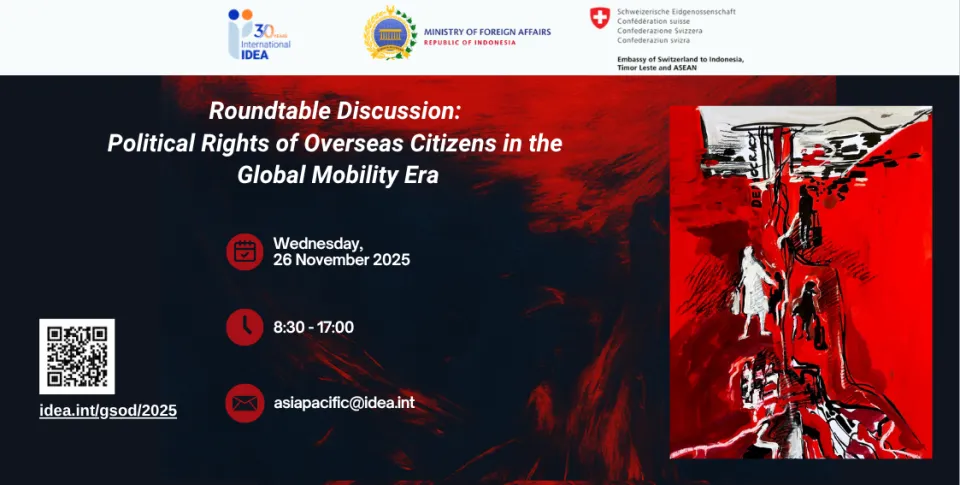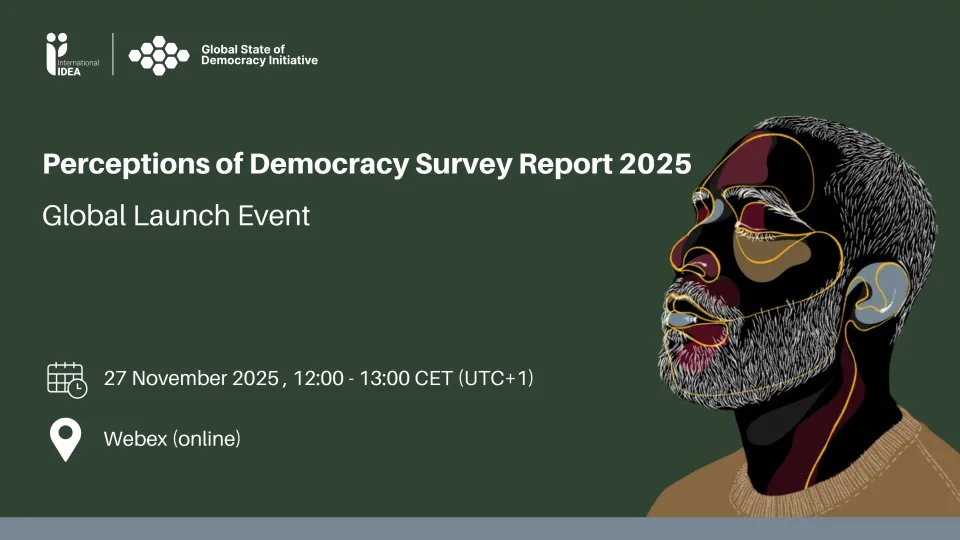Implementation of Goal 16 of the 2030 Agenda for Sustainable Development: From Vision to Realization
From a national breakdown of targets to policy reform.
The success of the Sustainable Development Goals Agenda 2030 framework will depend on the ability to transform the texts into an instrumental tool that leads to policy reform in all parts of the world. A national breakdown of the framework’s targets could be considered to achieve this result. Cherry picking on the lines of national interests, however, should be avoided. The best way to do this is to combine a bottom-up approach with inclusive multi-stakeholder involvement. Long-term strategies are required, especially for the implementation of Goal 16 on peace, justice and effective and accountable institutions.
These and other conclusions are the result of the Roundtable on the “Implementation of Goal 16 of the 2030 Agenda for Sustainable Development: From vision to realization"which was organized by the Office of International IDEA to the European Union (EUO) on 7 July 2016. The Roundtable was organized in collaboration with the Embassy of Mongolia to the European Union and the European Institute for Asian Studies (EIAS), host of the event.
The Keynote Address was delivered by Belgian Deputy Prime Minister and Minister for Development Cooperation, Alexander De Croo, who provided clear insights to the Belgian strategy for implementation and how digital development can contribute to the process.
The discussion panel was composed of Jan Vandemoortele, Independent researcher, and co-author of the Millennium Development Goals (MDGs), Christian Leffler, Deputy Secretary-General for Economic and Global Issues, European External Action Service (EEAS), Rudy De Meyer, Deputy Director and Strategic Advisor, 11.11.11 and Jean-Louis Ville, Acting Director, Directorate-General for International Cooperation and Development, European Commission. Andrew Bradley, Head of the EUO moderated the debate.
Universality versus flexibility
Despite the imperfections of the SDG framework, its adoption is generally welcomed as a big achievement. Jan Vandemoortele clarified the broader context of the implementation on the basis of a presentation with concrete examples. He demonstrated that, in order to be truly universal, the SDGs and targets need to have a numerical outcome, a specific deadline and conceptual clarity. Only some 30 targets have these characteristics. The success of the SDG framework will therefore depend on the ability to transform the ambitious, one-size-fits-all UN texts into an instrumental tool that leads to policy reform in all parts of the world. To achieve the best possible results, a national breakdown of the targets – an adaptation and selection of targets to the national context – could be considered. Ideally, this process would be marked by inclusive participation.
Mutual reinforcement of European strategies and governance of human rights
The SDGs affect each and every nation around the world. The new European Global Strategy on Foreign and Security Policy and the SDG Agenda 2030 have a comparable crosscutting nature. Both Agenda’s depend on accountable institutions at all levels, and a successful move from aspirations to specific targets, figures and benchmarks. Taking the immigration crisis as an example, it was emphasized that the economic dimension, stability and the governance of human rights are key elements for sustainable development. Political will is needed on all levels to face these challenges. The panel concluded the topic by discussing the opportunities and need for partnerships between the EU and its Member States to assure implementation.
Monitoring development and involvement of regional organizations
The panel also discussed how the set-up of a common monitoring structure could support the implementation of the SDGs. Without thorough and continuous monitoring, many of the listed targets will be lost. The need for strong internal accountability is inherent to Goal 16, but is equally invigorating to all other SDGs. Apart from the global and national levels, regional organizations can play an important role in the monitoring process. The EU can contribute by making its policies and instruments more aligned and compatible with the SDGs. Further, it was suggested that the EU should also endeavor to increase their member states’ accountability, and support initiatives for peer review and monitoring.
Multi-stakeholder approach
During his Keynote Address, Deputy Prime Minister De Croo said that, through the Belgian development cooperation, the federal government has consistently promoted democracy. The best way to avoid SDG cherry picking on the lines of national interests is to adopt a bottom-up approach: the civil society and business community – the captains of industry in particular- should therefore be associated in a true multi-stakeholder strategy. Governments at all levels should promote a SDG sensitive approach, in facilitating private investment and boosting public investment, as well as in combating fragile living conditions. In this regard, the Belgian development cooperation focuses on a number of least developed countries.
Providing effective answers
During the exchange of views, the audience voiced a number of concerns related to poor national commitment and the need for more diversity and flexibility with regard to the implementation of the SDGs. The panel members provided some elements of a future vision on effective sustainable development, with the important conclusion that an active participation at every level of governance and social action is a key to success.
During his concluding remarks, the Ambassador of Mongolia to the EU, Khishigdelger Davaadorj, underlined the importance of access to justice for all citizens, transparent governance and the respect of human rights. The implementation of Goal 16 requires long-term strategies and should therefore not remain crisis-driven, as it was during the last decennia. Political action, radical innovation, far-reaching collaboration and effective monitoring will be necessary to succeed.
The European Institute for Asian Studies has contributed to the content of this article.



